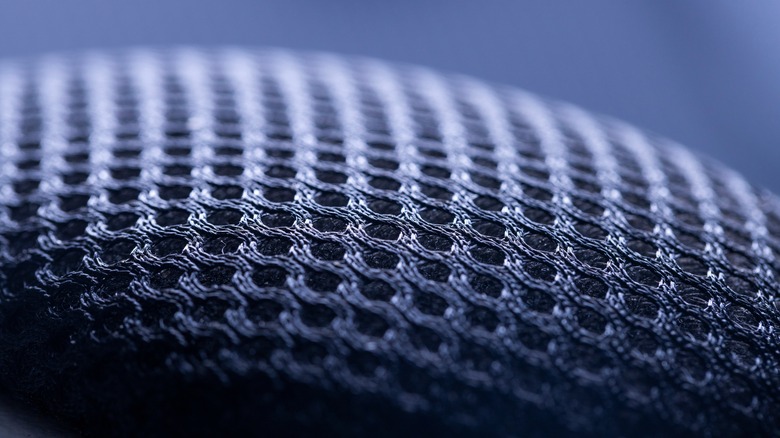Are Smartclothes Ever Going To See The Light Of Day?
Smart clothes are exactly what they sound like: any piece of apparel that also connects to a device via at least one sensor and some form of wireless communication can be considered smart clothing. The nomenclature also applies to clothing that's been woven with electronics and similarly named "smart textiles," which are designed to sense and sometimes react to their environment.
The purpose of smart clothing is to integrate fashion with advanced functions that are generally provided to us by smartwatches and smartphones. But some have rightfully questioned whether the future really has a place for smart apparel, which can be particularly expensive when maintaining an entire wardrobe, especially when alternatives like the Apple Watch or Fitbit Versa are theoretically already good enough to serve most of the data-tracking and quick-communication utilities that smart clothing can provide.
A study published by the Journal of Applied Physics noted in 2021 that there are three "major impediments" to the standardization of electronic textiles, including the flexibility of conductive wiring, the need for power generation, and garment production (the actual cutting and sewing of these garments with traditional means, as well as the handling of moisture). This research also made the point that very few products have been viable enough commercially to cultivate long-term support. However, there are already a handful of smart apparel products that are worth looking at right now.
The best smart apparel right now
The best smart clothing items that you can already buy and wear today are simple in concept, generally scratching one or two itches that Apple forgot to patch into its latest watchOS update. That said, it's probably worth looking into a few successful applications of smart textiles in clothing.
One of the most useful pieces of smart apparel on the market right now is a pair of Sensoria Smart Socks, which can store and register data to help boost running efficiency, the company claims. Smart components in these socks are able to register movement, and the socks are able to send that data to a second device. That data can be tracked on a separate smartphone app, which can give pointers on how to decrease the strain on your feet. The biggest downside is the cost. The first pair of socks will run you $398.00 — included in the cost is the Sensoria Core components required to register data with each footfall. Each additional pair is priced at $49.00 or $69.00, depending on whether you want one or both socks fully equipped with pressure sensors.
Another, even lower-tech application of smart textiles can be attributed to Under Armour's Recover apparel line, which is made up of a type of far-infrared-emitting fabric created by CELLIANT. The fabrics in the clothing evidently reflect heat as far-infrared light that can remove any discomfort generally associated with hot athleticwear, relaxing the user's muscles instead. Under Armour's Recover clothing (with CELLIANT inside) is priced in the $40-80 range and doesn't connect to any external smart device, but it does serve as an example that not all smart clothing needs to send text messages or order pizzas to be useful.

